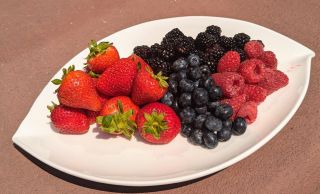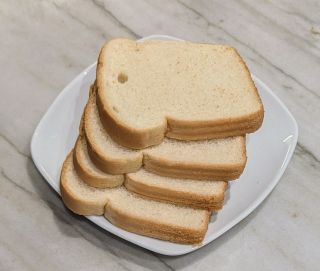Relationships
Summer Romance Deliberations
Personal Perspective: Romance can go well or turn upside down.
Posted July 4, 2024 Reviewed by Kaja Perina
Key points
- It's natural to wonder why romance hasn't happened, especially when it seems everyone is in a relationship.
- The "Plant Your Own Garden" metaphor centers on being grounded and attracting others who are as well.
- We have instincts about the choices before us. Sometimes we talk ourselves out of knowing what we know.

Years ago I was invited to four weddings in one summer. There was so much travel I took on an additional part time job to pay for expenses. It was important to be there for my friends, especially knowing the challenges they’d faced to reach this milestone. And yet, as I traveled to those weddings, I couldn’t help but wonder why romance hadn’t happened for me. Like the berries in our Upside-Down British Summer Pudding, I wanted something sweet and refreshing to call my own.
With July 4th weekend looming, I’ve thought back to that summer, wondering about the process of meeting someone today. While our book Eating Together Being Together talks about family relationships, I thought it’d be fun to focus on romantic relationships this summer:
What are we looking for in romance? How can we find it? Are there times we need to step back from romance, focusing on ourselves instead?
Plant Your Own Garden, Metaphorically
When clients share they want to be with someone but continue to get hurt or ending up with the wrong person, we often take a step back from relationships to consider what’s going on individually.
It’s natural to be in a relationship with someone who fills a part of us. “Opposites attract” is true when a partner’s quality complements our natural selves. My chef husband Julian’s quiet presence is calming when I start to fret. And for Julian, I hope my joy of nurturing friendships supports engagement with others.
The risk, however, is when we’re with someone to fill a need rather than considering if we really want to be with that person. That's when we might settle. And while settling is a problem all on its own, it also means we lose time trying to find the right fit.
In these moments, conversations with clients likely turn to "Plant Your Own Garden." When we metaphorically do so, we plant the seeds for experiences and friendships that nurture our souls. We tend to personal and interpersonal growth, just as we would to help the berries in our pudding flourish.

Like the berry bushes, we see what transpires when we cultivate our interests, passions, and friendships. The Plant Your Own Garden metaphor creates a foundation of centeredness with the hope of attracting and being attracted to people from a grounded place.
Patterns Are Repetitive
It’s lonely to be with someone who doesn’t "get" you, value you, or laugh at your jokes. As a young adult trying to meet someone I remember thinking: “I keep going out with the same person. They’re different people, but they’re the same person.”
It can be helpful to take a break from dating, stepping back to understand relational patterns rather than repeating them. Here conversations around self-esteem and agency can encourage greater intentionality.
I remember the night I decided to meet Julian. Everyone was dancing at his cousin’s wedding. There were two people of interest, Julian and someone else I’d just met the week before. This other person was definitely the type I’d been attracted to in the past: attractive, aloof, with an edge. A flirty challenge. And I loved a challenge. But I’d also learned that romantic challenges bring sadness, even betrayal. To this day (and that was many days ago) I remember my mind telling me: “Don’t pick the bad boy. Don’t do it again.”
Then suddenly my foot was stomped on by the heel of a wedding guest's very pointy high heeled shoe. I hobbled over to the bar (there was a bruise on my foot that outlined the shape of the heel the next day) where Julian quickly got an icepack for the injury. At that moment I remember listening to my instincts. They were telling me to make a different choice. The voice said, “Go with the gentle soul, see where it leads you.”
We have instincts about the choices before us. Sometimes we talk ourselves out of knowing what we know. Listening to ourselves encourages us to change those patterns.
Vulnerability Can Open the Door
It’s important to allow ourselves to be vulnerable to meet people. This doesn’t mean telling someone we’ve just met everything about ourselves or agonizing over past relationship issues on a first date. Being vulnerable means taking a risk to truly be who we are so that the doors to authenticity unlock. If we pretend to be someone we’re not on a first date, the potential for attraction is not really based on who we are. Being vulnerable enough to be ourselves allows the origin of the relationship to evolve from our core being.
It's also kind of a good thing if being yourself doesn’t lead to a second encounter. You’ve ruled out spending time with someone who doesn’t fit with who you are. The world is open for you to meet someone else.
We’ve explored finding romance. But once we’ve committed, how do we build a healthy relationship? Mutuality is the next focus of our series. In the meantime, enjoy the best of summer berries with this deliciously wild, romantic pudding.

Fun fact, its secret ingredient is bread!
Upside-Down British Summer Pudding (from Eating Together Being Together, Clauss-Ehlers & Clauss-Ehlers, 2022)
INGREDIENTS
1 ½ lb mixed berries (strawberries, raspberries, blueberries, blackberries, red currants, black currants),
stems and leaves removed
2/3 cup granulated sugar
1 pinch fine sea salt
6–8 slices white bread, crusts removed
Vanilla ice cream or freshy whipped cream, optional
SERVES 4
In a large saucepan, melt the granulated sugar and salt in 3 Tbsp of water over medium heat. Add all your berries, except the strawberries. Warm the rest of the fruit, gently mixing it with a rubber spatula occasionally, for 3 to 4 minutes.
Remove the pan from the heat and let the mixture cool (do not strain). Next, prepare the pudding bowl: lightly splash a little water inside a 1 ½ pint pudding bowl and then line it with plastic wrap (the water will help the plastic wrap stick to the sides of the bowl).
Line the bowl with the sliced bread. Start this process by cutting a round piece of bread for the bottom of the bowl and then cut the bread into triangular pieces and use them to line the sides of the bowl, alternating them tip to tail.
When you look into the bowl you should only see bread, with none of the bowl peeking through.
With a slotted spoon, put the cooled berries in the bowl. You can now slice your strawberries and add them as you go. If the berry filling looks dry, add a little juice from the saucepan. Cut a circle from 1 slice of bread that’s the same size as the top of the bowl and place it on top of the berry filling to close the pudding.
Sprinkle the bread with a little juice and cover with plastic wrap.
Place a plate that is slightly smaller than the top of the bowl on top of your pudding, then place a weight (such as a pack of butter or a can of soup) on top of the plate. This will help push the fruit together and into the bread.
Refrigerate overnight.
The next day, remove the weight, the plate, and the top layer of plastic wrap. Place a large plate upside down on top of the pudding bowl and carefully flip everything, so your plate is on the bottom and the pudding bowl is upside-down on the plate.
Carefully remove the bowl from the pudding and then remove the plastic wrap.

Serve your summer pudding with vanilla ice cream or freshly whipped cream. Delicious!
References
Clauss-Ehlers, J.C.E., & Clauss-Ehlers, C.S. (2022). Eating together being together: Recipes, activities, and advice from a chef dad and psychologist mom. Princeton Architectural Press.




